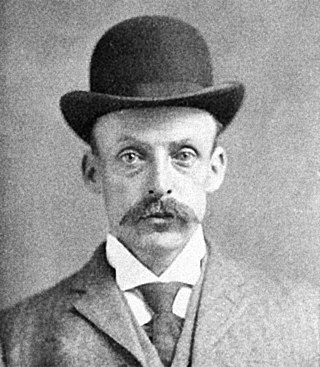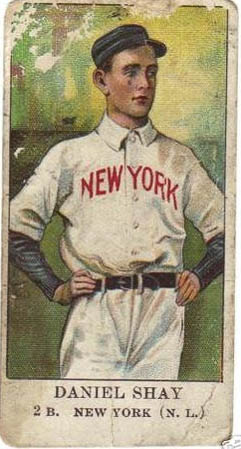Related Research Articles

Scarlet Street is a 1945 American film noir directed by Fritz Lang. The screenplay concerns two criminals who take advantage of a middle-aged painter in order to steal his artwork. The film is based on the French novel La Chienne by Georges de La Fouchardière, which had been previously dramatized on stage by André Mouëzy-Éon, and cinematically as La Chienne (1931) by director Jean Renoir.

Hamilton Howard "Albert" Fish was an American serial killer, rapist, child molester and cannibal who committed at least three child murders between July 1924 and June 1928. He was also known as the Gray Man, the Werewolf of Wysteria, the Brooklyn Vampire, the Moon Maniac, and the Boogey Man. Fish was a suspect in at least ten murders during his lifetime, although he only confessed to three murders that police were able to trace to a known homicide. He also confessed to stabbing at least two other people.

Constance Campbell Bennett was an American stage, film, radio, and television actress and producer. She was a major Hollywood star during the 1920s and 1930s; during the early 1930s, she was the highest-paid actress in Hollywood. Bennett frequently played society women, focusing on melodramas in the early 1930s and then taking more comedic roles in the late 1930s and 1940s. She is best remembered for her leading roles in What Price Hollywood? (1932), Bed of Roses (1933), Topper (1937), Topper Takes a Trip (1938), and had a prominent supporting role in Greta Garbo's last film, Two-Faced Woman (1941).

Edith Jessie Thompson and Frederick Edward Francis Bywaters were a British couple executed for the murder of Thompson's husband Percy. Their case became a cause célèbre.
Elie Almon Culbertson, known as Ely Culbertson, was an American contract bridge entrepreneur and personality dominant during the 1930s. He played a major role in the popularization of the new game and was widely regarded as "the man who made contract bridge". He was a great showman who became rich, was highly extravagant, and lost and gained fortunes several times over.

James Alexander Reed was an American Democratic Party politician from Missouri.
Nixzmary Brown was a seven-year-old American girl from Brooklyn, New York, whose physical abuse, parental neglect and murder led to reforms in New York City's Administration for Children's Services.

Richard Francis Cottingham is an American serial killer who was convicted in New York of six murders committed between 1972 and 1980 and convicted in New Jersey of twelve murders committed between 1967 and 1978. He was nicknamed by media as the Torso Killer and the Times Square Ripper, since some of the murders he was convicted of included mutilation.

Helen Marie Twelvetrees was an American actress. She starred in Hollywood films in the sound film era from 1929 to 1939. Many of her roles were of "suffering women,” which reflected her tumultuous personal life. She has a star on the Hollywood Walk of Fame located at 6263 Hollywood Blvd.

Amanda Marie Knox is an American author, activist, and journalist. She spent almost four years incarcerated in Italy after her wrongful conviction in the 2007 murder of Meredith Kercher, a fellow exchange student, with whom she shared an apartment in Perugia. In 2015, Knox was definitively acquitted by the Italian Supreme Court of Cassation.
The Nancy Kissel murder case was a highly publicised criminal trial held in the High Court of Hong Kong, where American expatriate Nancy Ann Kissel was convicted of the murder of her husband, 40-year-old investment banker Robert Peter Kissel, in their apartment on 2 November 2003. It was arguably the highest profile criminal case involving an expatriate in Hong Kong's history, and was closely covered in the media.

Daniel Charles Shay was an American professional baseball shortstop, manager and scout in the late 19th and early 20th centuries. Shay's baseball career was relatively mediocre, and he is probably most remembered for being acquitted in the shooting death of a black man in 1917.

Rodney James Alcala was an American serial killer and sex offender who was sentenced to death in California for five murders committed between 1977 and 1979, receiving an additional sentence of 25 years to life after pleading guilty to two further homicides committed in New York State in 1971 and 1977. While he has been conclusively linked to eight murders, Alcala's true number of victims remains unknown and could be much higher – authorities believe the actual number is as high as 130.

Sharon Kinne, also known as Jeanette Pugliese and in Mexico as La Pistolera, is an American murderer and prison escapee who was convicted in Mexico for one murder and is suspected of two others in the United States, one for which she was acquitted at trial. As of 2023, Kinne is the subject of the longest currently outstanding arrest warrant for murder in the history of Kansas City, Missouri, and one of the longest outstanding felony warrants in U.S. history.

Nell Donnelly Reed was an American fashion designer and businesswoman, known for her house dresses, who founded the Nelly Don brand.

Joan Olive Robinson Hill was a socialite and equestrian from Houston, Texas. Her unexplained death at age 38 led to her husband, John Hill, becoming the first person to be indicted by the state of Texas on the charge of murder by omission. The case precipitated a series of events that included the 1972 murder of John Hill and, two years later, the fatal police shooting of the man accused of that murder. Adopted as an infant by wealthy oil tycoon Davis Ashton "Ash" Robinson and his wife, Rhea, Joan became an equestrian at a young age. She excelled and continued the sport into adulthood, ultimately winning several national titles.
The death of Joan Robinson Hill at 38 years old led to her husband, John Hill, becoming the first person to be indicted by the State of Texas on the charge of murder by omission. The case precipitated a series of events that included the 1972 murder of John Hill and, two years later, the fatal police shooting of the man accused of that murder.
The "Bridge Battle of the Century" was the name given to a celebrated 1931–1932 contract bridge challenge match between Ely Culbertson and Sidney Lenz and their partners.

On December 17, 2013, Heather Elvis, of Carolina Forest, South Carolina, United States, went on a first date with a man that ended when he dropped her off at her apartment the following morning at 1:15 a.m. The date had been Elvis' attempt to move on after a relationship with Sidney Moorer, a repairman she had met through her job at a local restaurant, that had ended two months earlier. At 1:44 a.m., Elvis called her roommate, Brianna Warrelmann, who was visiting family, to tell her how the date had gone. The conversation lasted approximately ten minutes. Warrelman had advised Elvis against returning Sidney's calls, and cautioned Elvis "not to do anything rash and to get some sleep." Elvis' cell phone activity ended that day around 6 a.m., and she has not been seen or heard from since.

Daniel Oliver Jones is an American serial killer who raped and stabbed four young women to death in Kansas City, Missouri, between 1998 and 2001. He was arrested shortly after the final murder, and DNA evidence linked him to the previous crimes, after which he confessed and was given multiple life sentences.
References
- 1 2 3 4 William M. Reddig (1986). Tom's town: Kansas City and the Pendergast legend. University of Missouri Press. pp. 192–193. ISBN 0-8262-0498-8.
- ↑ Granovetter, Matthew (1999). Murder at the Bridge Table. Master Point Press. pp. 5–6. ISBN 978-1-894-15411-6.
- ↑ "Bridge Club news". Everett, Washington Herald. August 7, 2017. Retrieved August 28, 2018.
- ↑ "Bring Bridge Back to the Table". The New York Times. November 27, 2005. Retrieved August 28, 2018.
- ↑ The Kansas City Star, The Kansas City Times and The Kansas City Journal-Post. February 22, 1931 to March 7, 1931
- 1 2 Dan Bessie (2000). "Battle of the century". Rare birds: an American family. University Press of Kentucky. pp. 79–80. ISBN 0-8131-2179-5.
- ↑ The Bridge World, December 1929
- ↑ The San Francisco Call-Bulletin, April 24, 1931
- 1 2 Pomerantz, Gary (2009). The Devil's Tickets . Crown. ISBN 978-1-4000-5162-5.